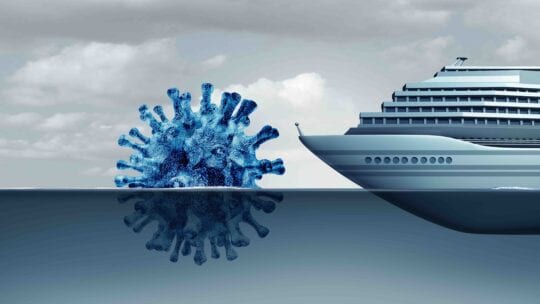
[Editor’s Note: Having a plan is the minimum requirement for crisis pros. That’s not always possible as veteran brand communicator Bobbie Carlton tells us in this Q&A.]
PRNEWS: Give us the scenario, please.
Bobbie Carlton: On Saturday February 8, 2020, a former co-worker, Blake Courter, contacted me. His parents, Gay and Phil, were among 3,600 passengers quarantined aboard the Diamond Princess, the ship where some 700 coronavirus infections occurred. He’d been trying to manage media for his parents and needed help. Could my firm handle it? Immediately? Within one hour we booked media, had partially written a press release and distributed it the next morning.
PRNEWS: Obviously, there was no crisis plan. What did you do to manage? What can our readers learn from the ordeal?
Carlton: Blake started off very well–creating a time zones table showing London, Japan, Paris and Boston (his parents were off Japan’s coast and we were in Boston). Requests were coming in from all over the world. We also had a Google folder where we could share documents, a spreadsheet for the media list and a daily statement.
One of the biggest issues was that his parents didn’t have laptops, just smartphones and a tablet. Big documents and briefing notes weren’t going to work. So, we created simple schedules that could be read in email–any changes, and there were a lot–had to be entered manually.
We also instituted a daily folder system in the Google folder we shared with the media. We were sharing pictures, video and audio recordings from Phil, with credits. Reporters could dip into the folder and pick up that day’s statement and any new images or recordings.
PRNEWS: Give us a feel for the volume of the media frenzy.
Cartlon: I’ve worked with public companies and large-scale global media relations projects, but I don’t think I ever dealt with a story that prompted this kind of media attention. We were booking 10-15 interviews a day and supplying images and video for dozens more. This included the NY Times, Wall Street Journal, Washington Post, CNN, NBC, SkyTV, BBC, CTV and more.
It was not unusual to take a five-minute phone call and have four to five voicemails come in simultaneously. The calls and emails were coming in round the clock, in clumps, representing Asia, Europe and the US.
Since I’m a bit of an insomniac, I handled calls very early in the morning (4:00 am) until 9, when a senior staffer would take over so I could get other client work done. Then I would pick it up again after 5:00 pm and go until midnight or so. That was really the only time we were off.
PRNEWS: You had clients who know narratives. Gay is a best-selling writer and Phil makes documentaries.
Carlton: Yes, our clients were great about focus. We all knew what we wanted to accomplish, and this helped us tremendously. We would discuss the best way to tell the story and zero in on the day’s top messages. They had an eye for detail and frequently shared pictures and detailed observances that helped build a richer story. Our goal was to make the story front-page news and get the US government to step in. The Courters felt the quarantine was ineffective. Personnel were not trained to implement a quarantine. Moreover, crew members potentially were infected, living in close quarters and moving throughout the ship, delivering meals and supplies to passengers in their cabins.
PRNEWS: How did you build trust with international media?
Carlton: In my previous life I headed global PR for two public companies, so I have quite a bit of international media experience. That said, there were a few times when I was guessing, albeit educated guessing, about a few of the international media. I reached out to old friends and international contacts who generously gave me guidance.
PRNEWS: This was more than an assignment. You literally were trying to save your clients’ lives.
Carlton: I tell junior PR pros, “This isn’t brain surgery. No one is going to die if you don’t get that press release out. Put it in perspective.” Suddenly, I was faced with a situation where people were dying. The Courters are in their 70s and were clearly beyond worried. We scheduled a rest day at one point. The last thing we wanted to do was exhaust them and potentially compromise their immune systems.
PRNEWS: What other tips can you give our readers?
Carlton: I can’t stress enough the impact of sharing media efficiently. The folder of high-quality pictures, video and audio files was gold, and making the images available around the clock, with attribution, contributed greatly to the ubiquity of the Courters’ and the Diamond Princess’ story. There are literally thousands of stories on the Diamond Princess and the early days of the coronavirus spread. There’s no way we could have done enough interviews to satisfy everyone and get all those stories placed.
Contact: [email protected]
